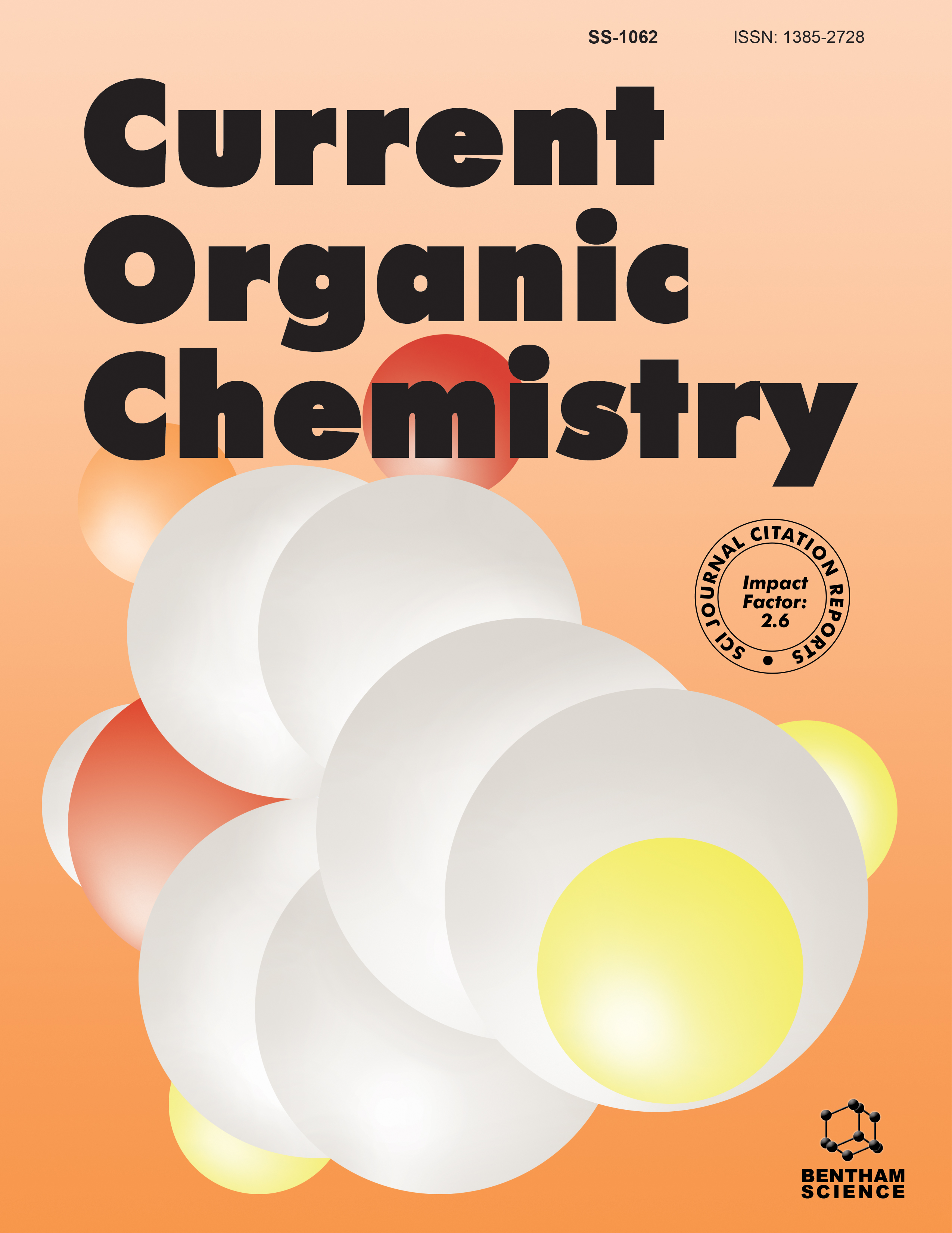- Home
- A-Z Publications
- Current Organic Chemistry
- Previous Issues
- Volume 25, Issue 20, 2021
Current Organic Chemistry - Volume 25, Issue 20, 2021
Volume 25, Issue 20, 2021
-
-
Recent Advances in the Transition Metal-Catalyzed Addition of Carboxylic Acids to Alkynes
More LessRecent advances in the metal-catalyzed hydrofunctionalization of alkynes with carboxylic acids are comprehensively reviewed. Both inter- and intramolecular processes, leading respectively to enol esters and lactones, are discussed, as well as the involvement of these transformations in the synthesis of natural products and biologically active molecules, and the assembly of elaborated heterocyclic compounds through cas Read More
-
-
-
Heterogeneous Metal Catalysis for the Environmentally Benign Synthesis of Medicinally Important Scaffolds, Intermediates, and Building Blocks
More LessAuthors: Maysa Ilamanova, Maxim Mastyugin, Christian Schäfer, Anne Kokel and Béla TörökThis account provides a broad overview of the application of solid metal catalysts in synthetic chemistry with a focus on the synthesis of medicinally important scaffolds or building blocks. Heterogeneous catalysis is a fundamental contributor to green or sustainable synthesis. Despite this, many synthetic chemists overwhelmingly focus on homogeneous methods, and due to their unfamiliarity with solid catalysts, many would not Read More
-
-
-
Multi-component Reactions for the Synthesis of Biologically Relevant Molecules Under Environmentally Benign Conditions
More LessAuthors: Ranjay Shaw, Amr Elagamy, Ismail Althagafi, Akhilesh K. Srivastava and Ramendra PratapHeterocycles are very important scaffolds since many of them exhibit building blocks properties and good biological activities. Various chemical methods have been utilized for their synthesis and out of them, the environmentally benign approaches are highly demanding in view of the importance of green chemistry. There are vast pieces of literature available on sustainable and multi-component synthetic approaches, Read More
-
-
-
Exploiting Microwave-Assisted Organic Synthesis (MAOS) for Accessing Bioactive Scaffolds
More LessAuthors: Ashish Khanna, Prashant Dubey and Ram SagarA microwave-assisted organic synthesis is an alternative approach towards the traditional way of heating to obtain desired bioactive scaffolds as a product. This method has transformed the approaches of organic synthesis, due to shorter reaction time with high product yields, modifications of selectivity, increased product purities, and simplification of workup procedures. The microwave-assisted reactions can be performed un Read More
-
-
-
Photopharmacology of Azo-Combretastatin-A4: Utilizing Tubulin Polymerization Inhibitors and Green Chemistry as the Key Steps
More LessTubulin Polymerization Inhibitors (TPIs) are promising ligands utilized in chemotherapy for modern cancer treatment. However, the current TPIs exhibit many serious side effects that may pose limitations in chemotherapy. Combretastatin A-4 (CA-4) is a natural TPI that binds at the colchicine binding site located on microtubules. The only cis isomer of CA-4 is bio-active; however, due to its short half-life, it isomerizes quickly to i Read More
-
-
-
Advances in the Synthesis and Antisense Technology Applications of Bridged Nucleic Acid Monomers
More LessAuthors: Priyanka Mangla, Balaji Olety and Vivek K. SharmaBridged Nucleic Acids (BNA) or Locked Nucleic Acids (LNA) belong to a class of nucleic acid modification that is obtained by connecting the 2'-O and 4'-C of ribose sugar using a methylene bridge. This ‘bridging or locking’ of ribose sugar has a tremendous impact on the biological and biophysical properties of therapeutic nucleic acids. They have enhanced stability against nucleases and also have a higher binding affinity for the tar Read More
-
-
-
One-Pot Glycosylation Strategy for Rapid Access of Oligosaccharides with Wide Range of Molecular Diversity
More LessAuthors: Rekha Sangwan and Pintu K. MandalaIn carbohydrate chemistry, the synthesis of complex saccharides with well-defined structures is the most formidable process as it is quite strenuous to isolate carbohydrates in acceptable purity and amounts from natural sources. Therefore, complex saccharides with well-defined structures are often most conveniently accessed through chemical syntheses. This review mainly focuses on the methodologies for one-pot glycosylati Read More
-
-
-
Room-Temperature Ionic Liquids in Glycoscience: Opportunities and Challenges
More LessCarbohydrates are fascinating molecular scaffolds known for their diverse applications in chemistry, biology, medicine, technology, and materials science. In addition, owing to the notable features of Room-Temperature Ionic Liquids (RTILs) such as high-yield, short reaction time, simple handling, excellent recyclability, and environmentally benign nature, they have been extensively utilized as green solvents, catalysts, or Read More
-
Volumes & issues
-
Volume 29 (2025)
-
Volume 28 (2024)
-
Volume 27 (2023)
-
Volume 26 (2022)
-
Volume 25 (2021)
-
Volume 24 (2020)
-
Volume 23 (2019)
-
Volume 22 (2018)
-
Volume 21 (2017)
-
Volume 20 (2016)
-
Volume 19 (2015)
-
Volume 18 (2014)
-
Volume 17 (2013)
-
Volume 16 (2012)
-
Volume 15 (2011)
-
Volume 14 (2010)
-
Volume 13 (2009)
-
Volume 12 (2008)
-
Volume 11 (2007)
-
Volume 10 (2006)
-
Volume 9 (2005)
-
Volume 8 (2004)
-
Volume 7 (2003)
-
Volume 6 (2002)
-
Volume 5 (2001)
-
Volume 4 (2000)
Most Read This Month
Article
content/journals/coc
Journal
10
5
false
en


